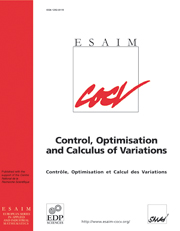No CrossRef data available.
Article contents
Comparison of active control techniques over a dihedral plane
Published online by Cambridge University Press: 15 August 2002
Abstract
This work is devoted to the numerical comparison of four active control techniques in order to increase the pressure recovery generated by the deceleration of a slightly compressible viscous flow over a dihedral plane. It is performed by the use of vortex generator jets and intrusive sensors. The governing equations, the two-dimensional direct numerical simulation code and the flow configuration are first briefly recalled. Then, the objective of the control is carefully displayed, and the uncontrolled flow described. The main part of this work deals with the explanation, the implementation and the comparison of four active control strategies: closed loop control, adaptative control, physical ramp control and sub-optimal control. Each of these techniques is of different nature, and results are very formative to understand what is important – or less – to make the control efficient.
- Type
- Research Article
- Information
- Copyright
- © EDP Sciences, SMAI, 2001




